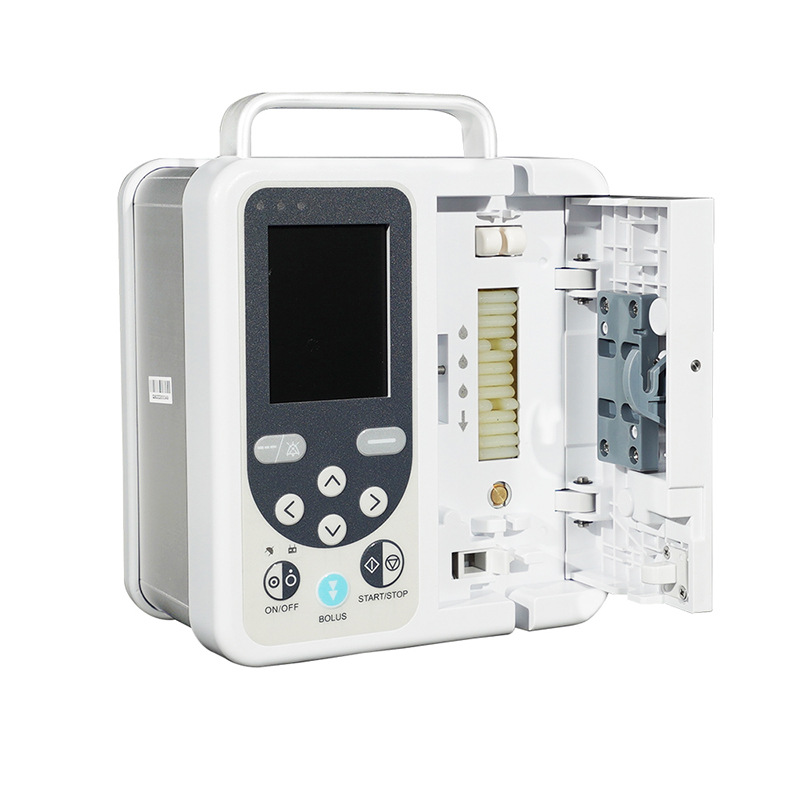For clinical directors and procurement decision-makers at leading hospitals like Ángeles del Pedregal in Mexico City, evaluating an infusion pump’s worth extends far beyond its purchase price. The true consideration lies in the comprehensive economic effect it delivers throughout its lifecycle—how it optimizes clinical workflows, enhances patient safety, and ultimately, positively impacts the hospital’s financial health. This article provides an in-depth analysis of the strategic economic value of infusion pumps in the modern healthcare system, offering data-driven support for your critical decision-making phase.
- Hidden Value Beyond Direct Costs: The “Safety Economics” of Reducing Medication Errors
According to the Anesthesia Patient Safety Foundation (APSF), serious medication errors not only cause patient harm but also incur subsequent treatment costs averaging tens of thousands of dollars. The Dose Error Reduction System (DERS) built into smart infusion pumps serves as a critical first line of defense.
- Data-Driven Decisions: Studies show that implementing DERS can reduce the incidence of serious medication errors by over 50%. For a hospital performing 100,000 intravenous infusions annually, preventing even a few serious incidents can lead to savings from avoided direct payouts, additional treatments, and legal fees that far exceed the device’s procurement cost.
- Brand Reputation Value: In today’s era of healthcare quality transparency, a lower medication error rate is an invaluable asset for achieving higher hospital ratings, attracting patients, and earning trust. Its long-term economic return is immeasurable.
- Efficiency Gains from Process Optimization: Freeing Up Valuable Nursing Time
The efficiency of clinical workflows is central to a hospital’s operational costs. The manual setup, documentation, and verification processes of traditional infusion pumps consume a significant amount of valuable nursing time.
- Quantifying Time Costs: Smart infusion pumps integrated with Electronic Health Records (EHR) can automate prescription delivery and infusion data recording. According to a report by the West Health Institute, comprehensive device integration can save each nurse over 30 minutes of paperwork per day on average. For a department with 200 nurses, this translates to an additional 100 hours freed up daily for direct patient care. This not only improves the quality of care but also indirectly reduces overtime costs or the need for additional staff due to shortages.
- Case Study (Mexico City): Imagine a busy ICU at the ABC Medical Center in Mexico City where nurses can monitor the status of all infusion pumps in real-time from a central station without frequent trips into patient rooms. The value and efficiency gains are undeniable, especially when managing high-risk patients or responding to public health emergencies.
- The Savvy Calculation of Total Cost of Ownership (TCO)
Astute decision-makers focus on the Total Cost of Ownership (TCO), not just the one-time purchase price. This includes:
- Consumables and Maintenance: An infusion pump with an open-consumable system might have a slightly higher initial price, but in the long run, it prevents the high costs of proprietary consumables tied to a single vendor, giving the hospital greater negotiating power and supply chain security.
- Training and Ease of Use: An intuitively designed, user-friendly infusion pump significantly shortens the staff training period and reduces potential errors caused by operational complexity. This saving on “training costs” is a vital component of the TCO.
- System Integration Fees: The West Health report notes that the one-time cost of integrating devices with an EHR can be as high as $6,500 to $10,000 per bed. Therefore, choosing a supplier that offers a mature, standardized integration solution can significantly reduce this substantial hidden expense.
In summary, an advanced infusion pump is not merely a capital expenditure but a strategic investment capable of generating continuous positive returns. By ensuring patient safety, optimizing human resources, and mitigating long-term operational risks, it builds a formidable economic moat for the hospital.
As you conduct the next round of equipment evaluation for your institution, we cordially invite you to look beyond the price tag and consider the comprehensive economic effect. Choosing an infusion pump that truly integrates into your clinical workflow, safeguards patient safety, and delivers exceptional lifecycle value is the wisest investment in your future.

